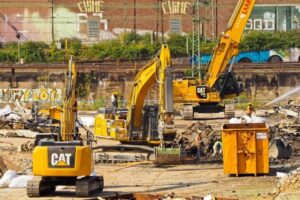Navigating the complexities of workplace safety, particularly when it involves tasks performed at elevated levels, demands a meticulous approach. Ensuring employee wellbeing in such scenarios transcends mere legal compliance, evolving into an ethical responsibility for employers. This narrative explores integral strategies and actionable insights pivotal for safeguarding personnel engaged in height-related tasks.
Deciphering Hazards and Legal Directives
Grasping the essence of potential perils and aligning with regulatory edicts is paramount. The Work at Height Regulations 2005, pivotal in the UK’s occupational safety landscape, compels meticulous planning and execution of elevated work. Identifying hazards like fall risks, unstable platforms, or climatic adversities, and strategically circumventing them, is foundational. Vigilance in risk assessment and staying updated with legislative evolution is indispensable.
Adhering to these statutes transcends mere lawfulness; it establishes a bedrock for a protective work milieu. Imparting comprehensive training and pertinent information to the workforce equips them with the acumen to pinpoint dangers and appreciate safety protocols, fostering a collaborative safety ethos.
Orchestrating Effective Hazard Management
At the heart of height safety lies adept risk management, spanning from judicious equipment selection to stringent maintenance protocols. Implementing safeguards like guardrails, safety nets, and personal fall arrest systems significantly diminishes accident probabilities.
HS Direct have a wide range of risk assessment templates, quintessential for employers. These frameworks offer methodical approaches for hazard scrutiny, ensuring comprehensive hazard identification and mitigation. Leveraging such tools enables businesses to cultivate customised risk assessments, mirroring their specific operational environments.
Empowerment through Training and Competence
Training is a cornerstone in cultivating a safety-centric culture for height-related tasks. It’s imperative for employees to receive instruction not only in equipment utilisation but also in hazard recognition and response. This training should be continuous, with periodic updates to maintain relevancy.
Competence is the complement of training. Ensuring that personnel engaged in elevated tasks possess the requisite skills, knowledge, and experience is crucial. This typically involves a blend of formal education and practical exposure, underpinned by a robust internal safety ethos.
The Role of Equipment and Technological Innovations
Selecting appropriate equipment is crucial for height safety, encompassing personal protective gear like harnesses and headgear to structural elements like scaffolds and ladders. Ensuring that all apparatus conforms to high-quality standards, satisfies industry norms, and is tailored for specific tasks is imperative.
Technological advancements augment safety measures. Modern fall prevention systems and sophisticated monitoring gadgets offer additional security layers, mitigating accident risks and ensuring prompt emergency responses.
Cultivating a Safety-First Ethos
Instilling a pervasive safety culture is critical for enduring safety in elevated work scenarios. This transcends regulatory compliance, embedding safety as a fundamental aspect of every operational facet. Promoting transparent communication, where staff feel empowered to voice safety concerns, is crucial to this ethos.
Leadership is instrumental in this context. Management’s demonstration of safety commitment in their decisions and actions cultivates a workplace where safety is a collective responsibility and intrinsic value.
In Summary
Guaranteeing safety for employees engaged in elevated tasks is an intricate yet vital endeavour. It necessitates a holistic strategy, integrating risk and regulatory knowledge, proficient risk management, comprehensive training, suitable equipment, and a pervasive safety culture. Focusing on these aspects enables businesses to foster a secure environment for their staff, mitigating inherent height-related risks and ensuring regulatory compliance. Safety in elevated workspaces transcends accident prevention; it’s about shaping an environment where every team member feels valued and safeguarded.





